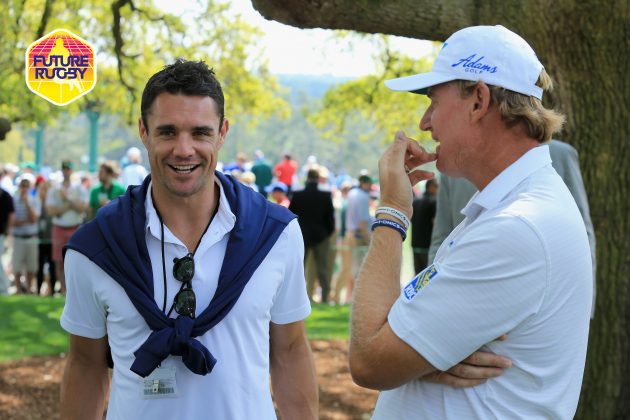As part of our 'Future Rugby' series, Sam Larner considers the power of the break from playing
Back in 2012, Richie McCaw announced his intentions to take a six-month sabbatical away from rugby. The following year Dan Carter followed suit. Four years later, Ben Smith took the new Zealand autumn and winter off and returned to score six tries at the 2019 Rugby World Cup. Those three stars of the game aside, the idea of a mid-career gap year has struggled to gain much traction. In this article, we look at why sabbaticals are needed and what the future of the rugby sabbatical might look like.
The life of a professional rugby player is not a healthy one. During the 2018-2019 season Faf de Klerk featured in 27 games, 22 the season after, 30 the one after that, 20 after that before a move to Japan. The playing didn’t stop though and in the 2022-2023 season he again notched up 24 appearances. In amongst all those have come injuries, such as the lower leg injury suffered against England in November 2022, and concussions, like against New Zealand in August 2022. Both saw him leave the field on a cart.
De Klerk’s playing time has only been reduced thanks to those injuries. He has played all around the world, often playing then travelling to a different continent, playing again, returning, and playing again. You might think that’s a busy season but a player like de Klerk doesn’t really operate in typical seasons. In 2017-2018 he played 35 times. His season started on the 2nd of September 2017 and finished on the 6th October 2018. He played at least one game during every month aside from July. His next season began on the 12th October 2018 and ran until the 10th August 2019 – he played in every month bar June. That is 22 months of matches in a 24 month stretch.
Related: Paul Williams: Rugby wages must conform to financial reality
The solution is an obvious one: restrictions on playing time and fewer matches to allow players to recover. But that’s not likely to happen and it’s not something players have control over. They do have control over their own careers though, especially in the case of global superstars like de Klerk. Exactly how they manage that process should be a focus for the future of the sport.

De Klerk had an all-action 2018 (Getty Images)
One option is a complete break from playing, the Dan Carter approach. Take six months to a year and go and do something else. That doesn’t just make sense from a physical perspective, but from a human one as well. Professional sport is not a good environment to foster a relationship or bring up a family. Research shows that one third of marriages involving a professional footballer end in divorce within a year of retirement and 70% within three years. We don’t know the numbers for rugby players but they, and all professional athletes, are likely to follow similar trends. Taking time away from the game to find out what you are like out of that environment can be hugely beneficial.
The other approach is to structure your contract to allow you to have the best of both worlds.
Contracts in the Japanese league are often seen as something approaching a sabbatical, but you’re still playing plenty of rugby there. De Klerk played 906 minutes in 2023 for the Yokohama Canon Eagles, he played that much for Sale just once in his last three seasons there. The intensity is lower and the glare of the media spotlight largely absent but there is an alternative option. Stars could take roles in places like Japan or the US but with contract stipulations which allow them to only play a small number of games. That may keep them under contract for just a short period, akin to how county cricket operates where foreign stars come to England for a few matches before their nation tours. It may alternatively limit them to a certain number of matches or minutes with the club choosing when and where to deploy them. Getting a star into the league would be a huge coup for the team and the player could enjoy living elsewhere without the relentless grind of playing, week after week.
There are issues with all of these suggestions though, they are only open to the elite players. The players who have enough money to forego half a season’s earnings and enough job security that they know they can walk back into the role once the sabbatical is over. Their absence will create opportunities for younger talent to flourish but it will also increase the gap between the haves and the have-nots.
Something has to give though. If it’s not going to be restrictions placed on playing time by World Rugby then it will have to be players doing what is best for them and taking career breaks. It might have a short-term loss but if they come back rejuvenated and injury free, we might be seeing far more of these megastars for much longer. After a stuttering start with Carter, McCaw, and Smith, the sabbatical might be back with a bang in 2024!
Download the digital edition of Rugby World straight to your tablet or subscribe to the print edition to get the magazine delivered to your door.






